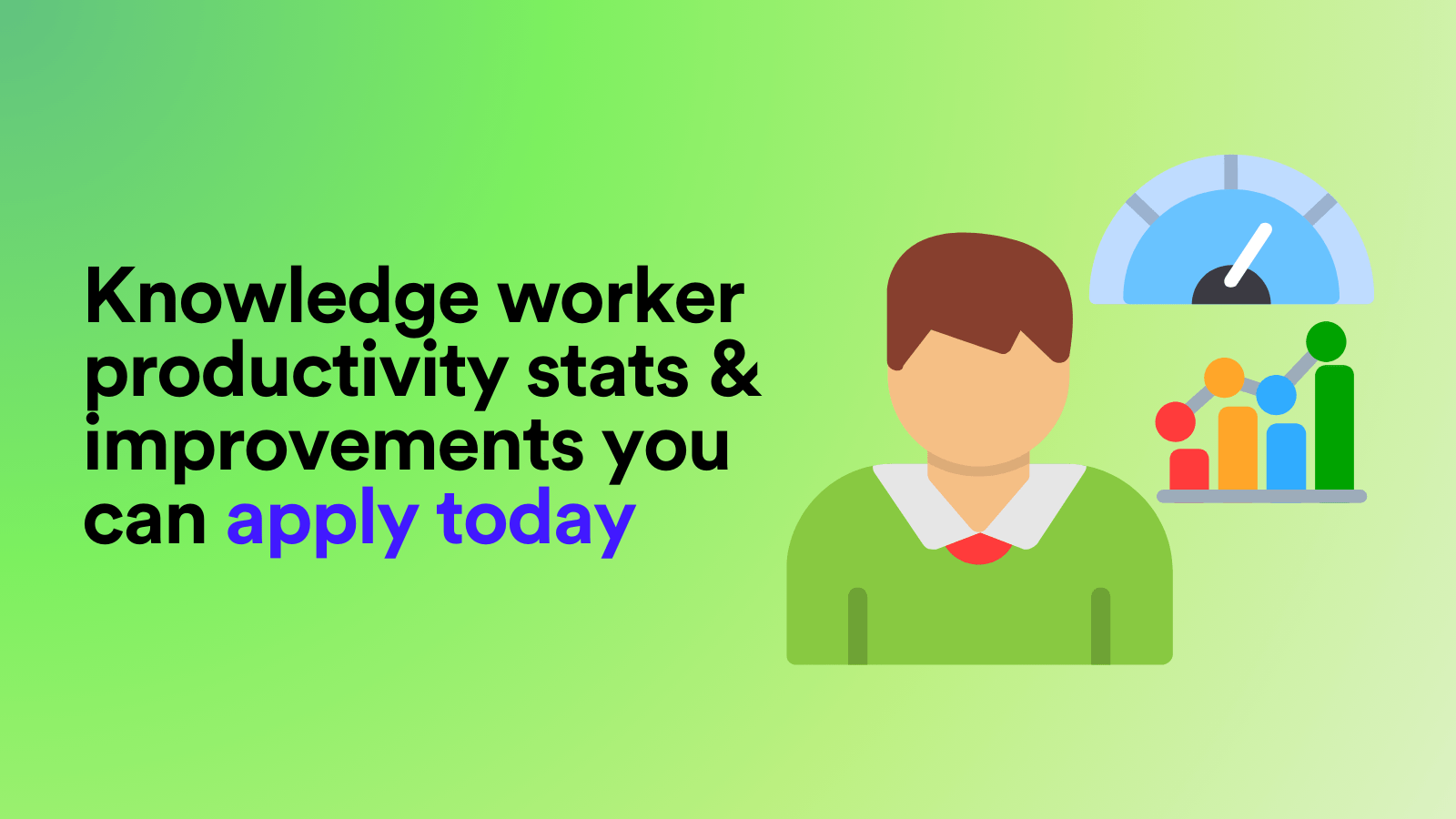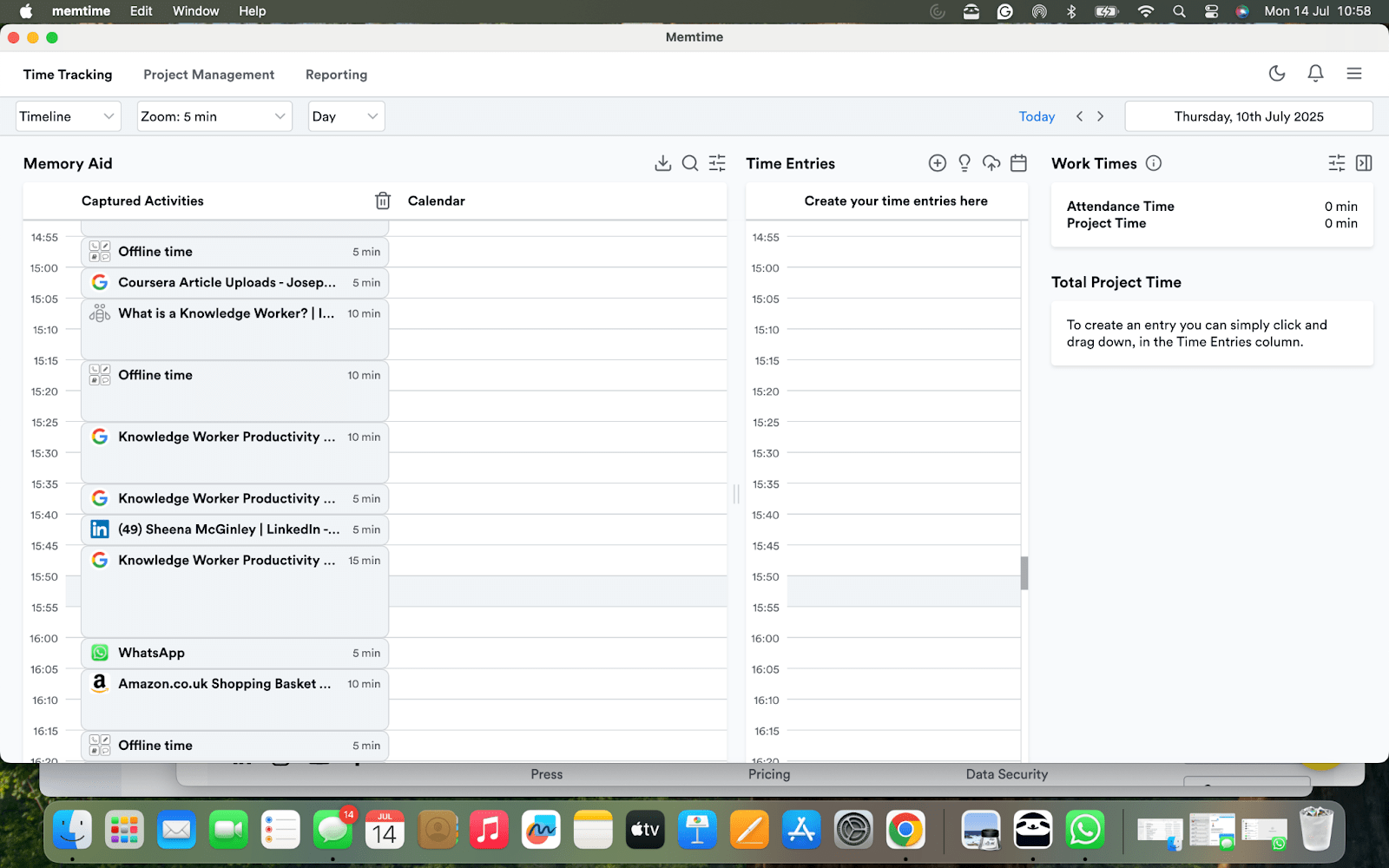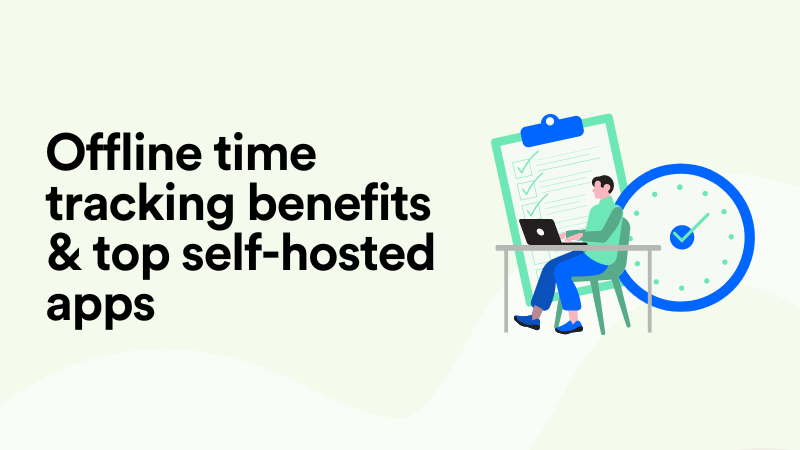Knowledge Worker Productivity Stats & Improvements You Can Apply Today

If you lead a knowledge-intensive team — or work solo in fields like marketing, law, consulting, or design — chances are, your day feels endlessly busy but oddly unproductive. And, no, you're not imagining it. It’s normal. And tiring.
It doesn’t help that knowledge work itself can be fragmented. There’s also a prevalence of those pesky time sucks, like context switching, fluid priorities, invariably a load of meetings, and digital distractions. So, when we ask "How productive are knowledge workers?" – the real answer exposes a broken system, not broken people.
This article breaks down the stats, shares examples from across industries, and explores new ways to measure and improve knowledge worker productivity – starting with how we protect time, regain focus, and recover capacity across teams.

What is knowledge working productivity?
Before we answer that, we should probably back up a bit and tackle the fundamental question of “What is a knowledge worker?” Simply put, a knowledge worker is considered a competent expert who adds value via their (yes, you guessed it) knowledge, problem-solving, and strategic planning skills.
Where does the moniker “knowledge worker” come from? It’s not a new-fangled term like “solutions architect” (which, to be fair, traces back to the noughties) or “vibe consultant”; it was devised by management consultant Peter Drucker back in 1959 as a potential new incarnation of the white-collar worker.
What do they do? Knowledge workers direct decisions, mold concepts, and quickly adjust to rapidly shifting circumstances. Most notably, knowledge workers use data to produce new insights and achieve results, as opposed to information workers who use it to accomplish tasks. By its nature, it’s largely unpredictable, so this needs to be factored in. It usually involves work that is:
- Spread across several platforms and tools
- Frequently interrupted by urgent requests and context changes
- Driven by conflicting stakeholder demands and changing priorities
- Packed with unseen work that is rarely seen in regular reporting, such as meetings, research, and ideas.
So, knowledge working productivity could be summarized as… the level of measurable value created through cognitive effort and shifting circumstances.
Knowledge work productivity examples
One of the best ways of getting one’s head around the concept of “knowledge work” and quantifiable productivity is context. However, it is helpful to dispel a widespread misconception about the "ideal 8-hour productivity block" before we get into examples.
Studies suggest that many knowledge workers hit their cognitive peak for only 2–4 hours a day, making effectiveness more about outcome than hours logged.
Moreover, the 2025 DHR Global Workforce Trends Report shows that while most desk-based knowledge workers feel engaged, persistent burnout affects approximately 34% of them, while more than eight out of ten workers (82%) report feeling somewhat burned out at various times. This directly reduces their ability to stay focused and productive.
So, in the majority of knowledge-based jobs, productivity is shaped by brief, concentrated bursts of high-impact thinking rather than being “on” all day. Here are some instances from various fields that illustrate that point:
Strategy and planning
When a team lead creates a sprint plan, they are actively directing the work rather than merely checking boxes or adhering to a template. It's about determining what needs to be done, when, and how to get people on board with that goal. The core of knowledge work is organizing, problem-solving, and enabling the momentum process. For instance…
Communication and collaboration
While managing a feedback session or updating a calendar may appear straightforward or even incidental, it takes this brain-driven effort and foresight to free people, change viewpoints, or enhance flow. What this might look like in action:
Exploration and insight
This is what research and innovation are all about – experimenting with new tools, seeing what works, and using that information to enhance product features or learning. Since the focus is on finding better ways to move forward, knowledge work thrives here.
Design and development
Creating a landing page or making changes to posts requires more than just aesthetic flair; it also entails knowing what appeals to people, what makes sense, and what motivates them to take action. Knowledge work focuses on the reasoning behind actions.
Analysis and reporting
Although data and dashboards may seem technical, the true power lies in understanding what to look for, why it matters, and how to respond to it. That's the domain of traditional knowledge work.
Crucially, it means normalizing the cognitive limitations (decision fatigue, context switching, creative slumps) and real-world challenges (ambiguous goals, fear of failure as opposed to baking it into the process) that come with this type of work – because thinking for a living isn't infinite, frictionless, or immune to context.

How productive are knowledge workers?
If you’re asking, “Are knowledge workers productive?” well, the title suggests they ought to be. But the more useful question is: how productive are they really? Can it be measured meaningfully, or is it like trying to measure a piece of string?
In reality, productivity for knowledge workers isn’t about time spent or tasks ticked off. It depends on how their work is structured, how clearly priorities are set, and whether time is set aside for deep, focused output.
So, to truly assess knowledge worker productivity, you need to rethink your productivity metrics.
By that, I mean:
- Embracing outcomes over output
- Normalizing the messiness of cognitive work
- Designing work environments that motivate deep focus, while supporting mental recovery and autonomy.
Knowledge work isn't infinite, frictionless, or untouched by real-world conditions. The more we account for those limitations, the closer we get to meaningful productivity. Again, for context (because context is everything), here are some stats:
- Knowledge workers typically spend 103 hours a year in often futile meetings, 209 hours on redundant tasks, and 352 hours just discussing work, time that is frequently ineffective and discouraging.
- Due to fewer workplace distractions, remote workers save over 62 hours a year, averaging 22.75 hours of deep-focus work per week as opposed to 18.6 hours for their in-office counterparts. In fact, freelancers report higher productivity and AI adoption than full-time employees, and 28% of U.S. knowledge workers currently work for themselves, bringing in $1.5 trillion in 2024.
- Although creative thinking may seem counterintuitive to using AI, 79% of knowledge workers believe AI increases their productivity, particularly by automating repetitive tasks.
Improving knowledge worker productivity
OK, now that we know that measuring knowledge worker productivity means redefining it – not by busywork metrics, but by the value and impact delivered – behold your constructive path forward!
1. Identify your bottlenecks
The first step is honing in on what slows down knowledge work. Again, this requires both qualitative and quantitative insight. With that in mind, you should:
- Workflow audits: Define the flow of tasks between teams and tools. Keep an eye out for any delays, duplications, or unclear ownership.
- Monitor digital friction: To identify inefficiencies, use behavioral analytics or "digital exhaust" (such as the frequency of app switching or notification overload).
- Pay attention to your team: To find hidden obstacles like unclear priorities, tool overload, or decision bottlenecks, conduct interviews or pulse surveys.
- Examine collaboration patterns: Prolonged meetings or disjointed communication frequently indicate more serious problems with the way the work is designed.
2. Protect your deep work time
Deep work is where high-value thinking happens, so you need to be mindful about its inherent fragility as it's so easily hijacked and/or disrupted. Your steps to mitigating this involve:
- Block time: Encouraging your team to plan protected focus blocks, such as 90-minute sessions, during prime cognitive hours is known as time blocking.
- Reduce context switching: We've said it before, and we'll say it again, mitigate multitasking! It does not benefit you. Instead, group related tasks together and use "ready-to-resume" plans for inevitable breaks to reduce multitasking and interruptions.
- Foster the right atmosphere: Establish environments that are conducive to concentration by setting aside quiet areas, turning off unnecessary alerts, and embracing asynchronous communication.
- Set boundaries: To demonstrate to the rest of the organization how important deep work time is, leaders should openly safeguard their own time. You should prioritize it from the top down.
3. Recover your lost billables and team capacity
Reclaiming time and value starts with visibility and smarter resource planning. Here's what you need to do:
- Track actual vs. planned capacity: Keep tabs on the amount of time spent on billable versus non-billable work by using resource management tools.
- Get rid of low-value tasks: Examine regular meetings, administrative work, and reports. Anything that doesn't produce results should be automated or sunsetted.
- Work should be aligned with your team's strengths: Give top performers high-value opportunities and refrain from misallocating talent to low-impact positions.
- Make use of scenario planning: Prior to committing, especially for incoming projects, estimate future demand and test resource allocations.
By identifying the things that are slowing you and your team down and redesigning work with clarity and focus, organizations can move from a never-ending hustle to meaningful progress!
Wrapping up
Currently, knowledge workers in the US have to deal with the double-edged sword of both high levels of engagement and growing inefficiencies. Even though a lot of workers say they feel motivated, research indicates that they spend more than 20% of their time on low-value tasks on average.
In order to increase productivity, you need to:
- Reduce distractions and group meetings to safeguard in-depth focus work
- Reorient roles to emphasize strengths and quantifiable results
- Snout out hidden inefficiencies by mapping time use
Without relying on guesswork, tools like Memtime support more intelligent, evidence-based decisions, restore lost capacity, and visualize time patterns. So that's your hidden inefficiencies and quantifiable results are looked after:

Your team can see exactly where the day goes without the need for spreadsheets or timers. It's a straightforward diagnostic tool that helps you identify time wasters, regain focus, and collaborate more effectively. Memtime provides you with actual data, enabling you to make significant adjustments and increase team productivity.
Why not give it a whirl today? The first 14 days are on us:
Sheena McGinley
Sheena McGinley is a columnist and features writer for the Irish press since 2008. She’s also a business owner that is conscious of how time tracking can foster progress. She wrote for SaaS companies and businesses that specialize in revenue optimization by implementing processes. She has the unique ability to digest complex topics and make them easy to understand. She shares this precious skill with Memtime readers. When she's not making words work for people, Sheena can be found taking (very) brisk dips in the Irish Sea.






